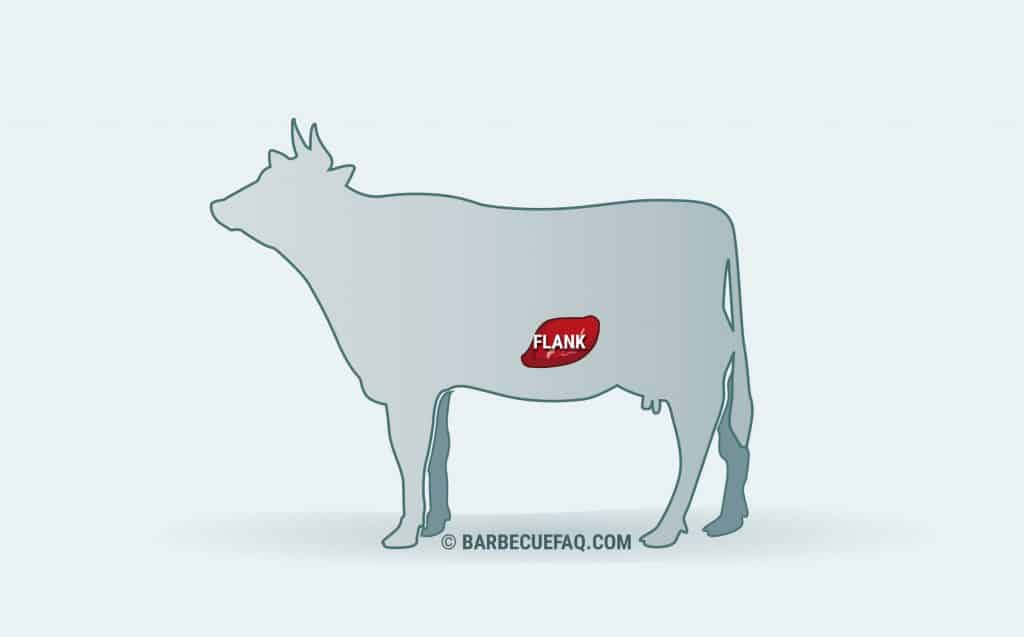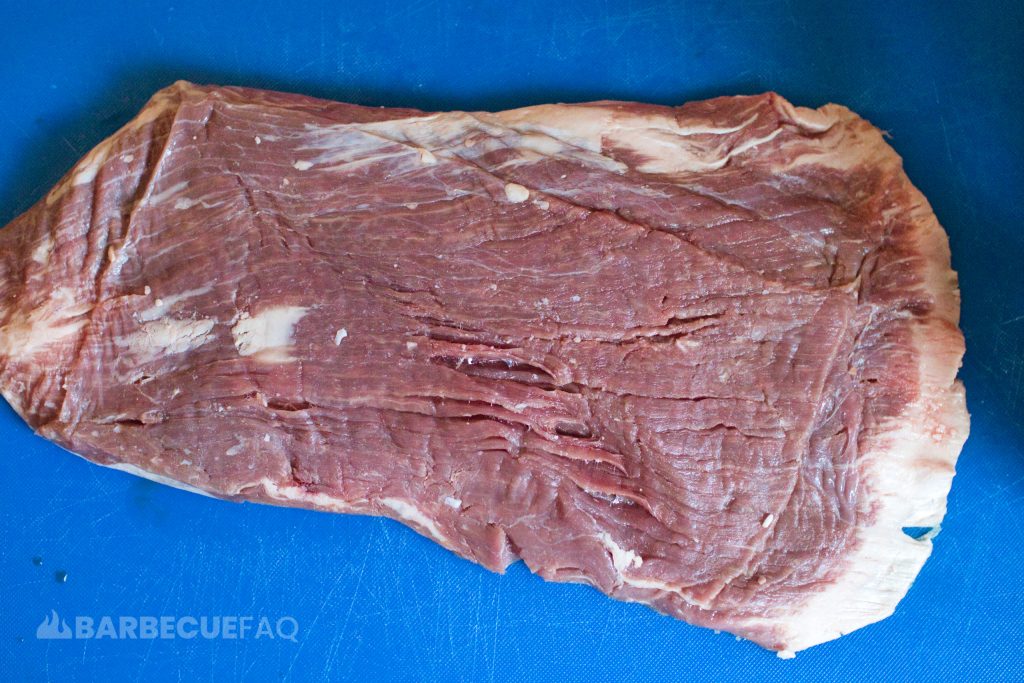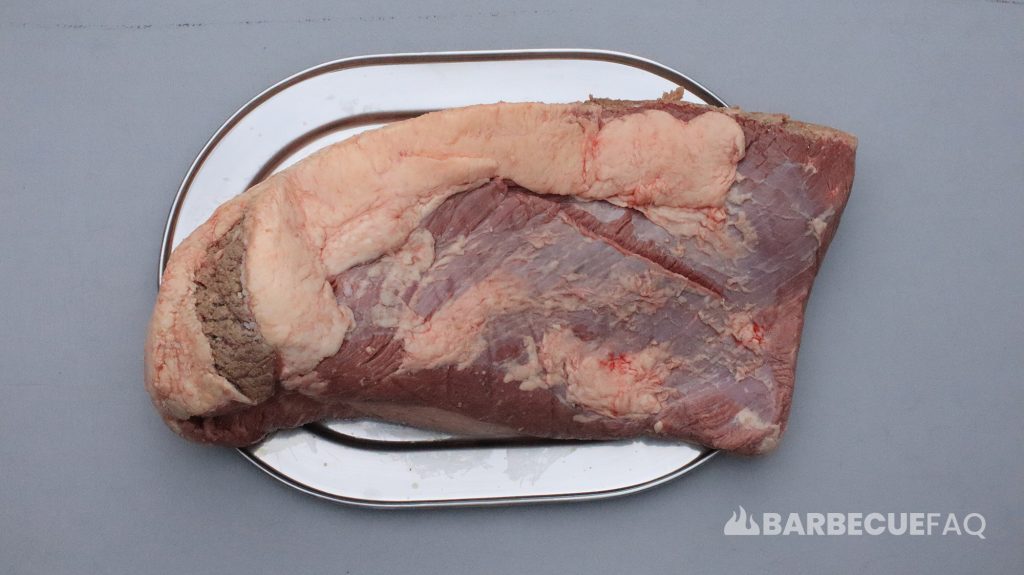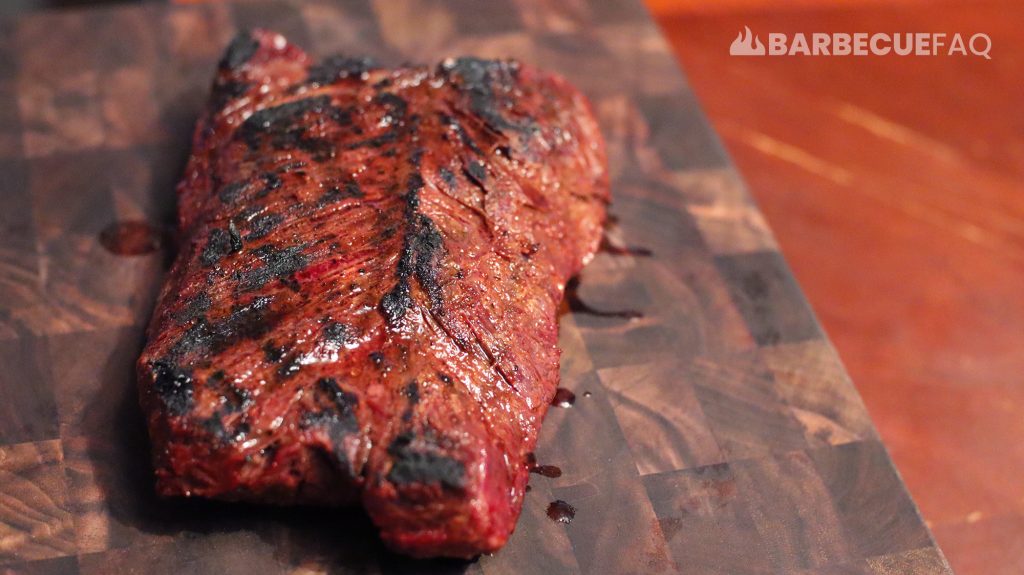The flank primal only produces one sub-primal cut, the flank steak.
The name “flank” comes from it’s anatomical location – the flank of the cow.

Other Names for Flank Steak
The flank steak goes by a number of different names depending on the Country and regional differences.
These are some of the more common names you’ll see:
- Jiffy steak – Named “Jiffy” due to the faster grilling time.
- London broil – Today, this more-so refers to the method of cooking as apposed to the type of meat. However, London broil originally referred to broiling flank steak in the oven.
- Bavette – French for “Bib.” This refers to its flat shape.
- Zabuton steak – In Japanese it refers to the shape of the steak, translating to “Little Pillow.”
Some resources will say “Arrachera” refers to flank steak – while this may be true depending on the region – direct translation from Spanish tells us that Arrachera is skirt steak.

Again, this same sort of thing is seen across the globe for any number of different cuts of meat.
How is Flank Steak Used?
Flank steak takes well to marinades as it is a thin cut of meat.
I personally like to use Flank steak for beef on a stick; You can check out my recipe here.
The most common cooking methods for flank steak include:
- Seared hot and fast on the grill
- Pan-seared in a skillet on high heat
- Braised in the oven (London broil)
The most common dishes that use flank steak:
- Stir fry
- Carne Asada
- Steak tacos
- Beef/steak on a stick
- Mongolian beef
- Beef fajitas
- Jerky meat
Flank steak can be served as a stand-alone steak, however, it’s not very common.




